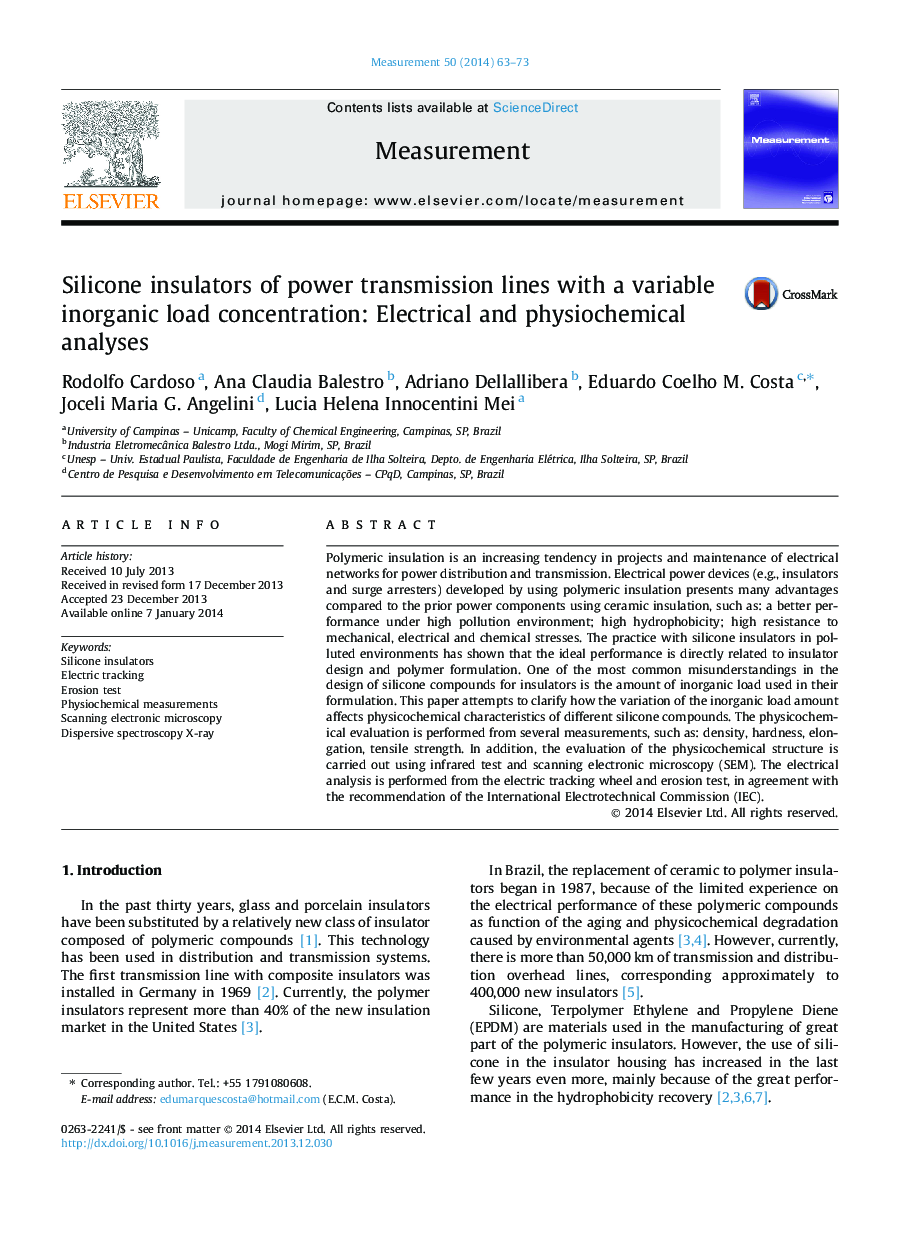| Article ID | Journal | Published Year | Pages | File Type |
|---|---|---|---|---|
| 730249 | Measurement | 2014 | 11 Pages |
•Physiochemical evaluation of power silicone insulators.•Mechanical analysis of the silicone rubber with variable load concentration.•Electrical performance evaluated using electric tracking wheel.•Analysis of the silicone contamination by Infrared – FTIR and EDX.•Visual ATH filler distribution by scanning electronic microscopy – SEM.
Polymeric insulation is an increasing tendency in projects and maintenance of electrical networks for power distribution and transmission. Electrical power devices (e.g., insulators and surge arresters) developed by using polymeric insulation presents many advantages compared to the prior power components using ceramic insulation, such as: a better performance under high pollution environment; high hydrophobicity; high resistance to mechanical, electrical and chemical stresses. The practice with silicone insulators in polluted environments has shown that the ideal performance is directly related to insulator design and polymer formulation. One of the most common misunderstandings in the design of silicone compounds for insulators is the amount of inorganic load used in their formulation. This paper attempts to clarify how the variation of the inorganic load amount affects physicochemical characteristics of different silicone compounds. The physicochemical evaluation is performed from several measurements, such as: density, hardness, elongation, tensile strength. In addition, the evaluation of the physicochemical structure is carried out using infrared test and scanning electronic microscopy (SEM). The electrical analysis is performed from the electric tracking wheel and erosion test, in agreement with the recommendation of the International Electrotechnical Commission (IEC).
